Meet Emily Imazumi | Koto Player and Instructor
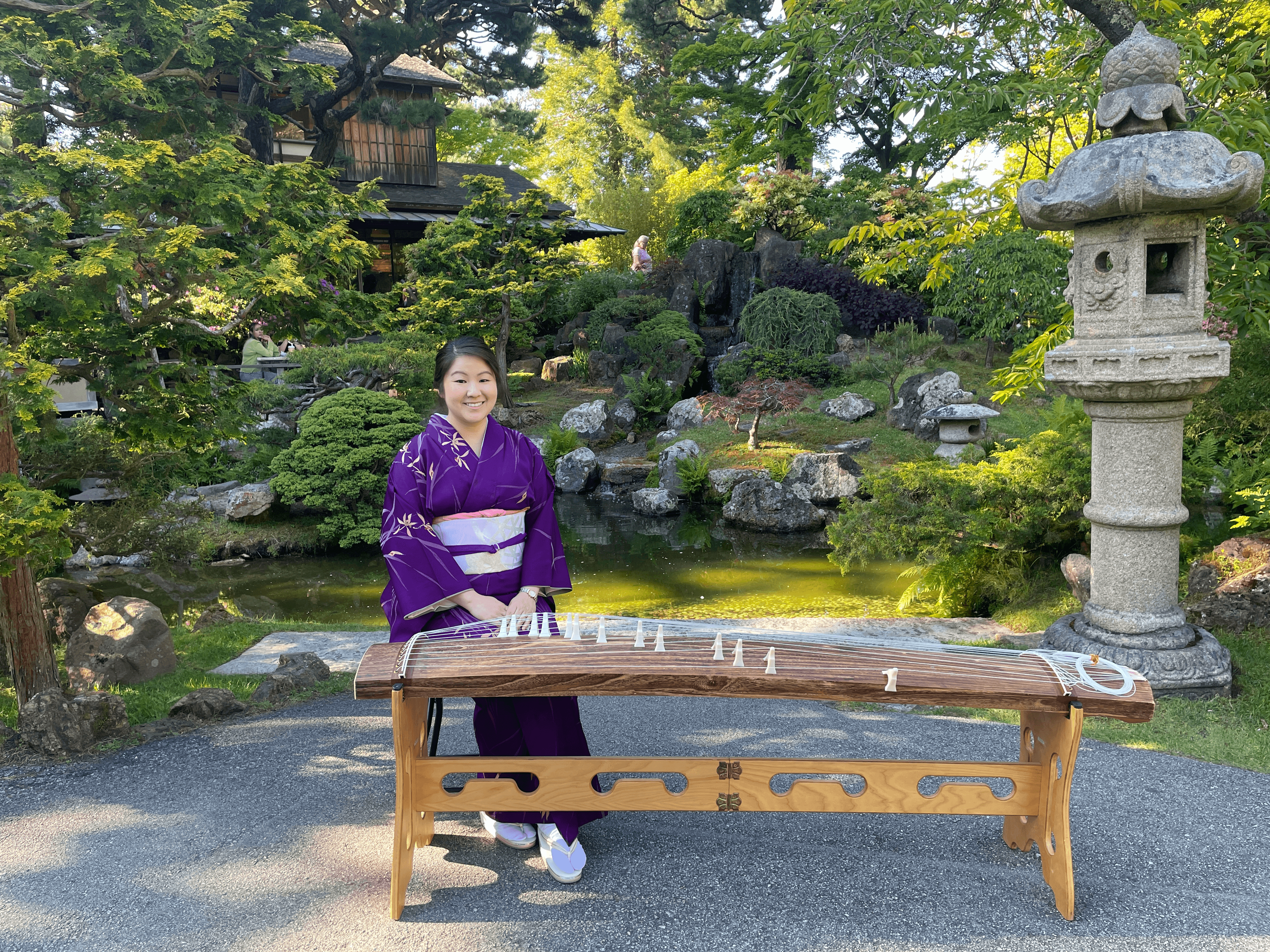
We had the good fortune of connecting with Emily Imazumi and we’ve shared our conversation below.
Hi Emily, is there something you can share with us that those outside of the industry might not be aware of?
When a koto’s strings need to be changed, it’s not as simple to replace them as it may be for a guitar, for example. Restringing a koto is very physically challenging and requires a significant level of skill. Because of this, there are professionals throughout Japan dedicated to koto stringing – a luxury we just don’t have here in America. What most outsiders may not realize is that many American koto players are unable to restring their own instruments, so every so often they have to arrange to fly these koto professionals in from Japan. While to some it may seem like an inconvenience to have to wait sometimes years have their instruments serviced, I’ve come to appreciate that this unique process has made me somewhat of a resourceful koto player. I’ve learned stringing tips from other koto players in my community and watched several stringing videos on YouTube so that I can learn how to replace strings on my own in the event of an emergency or in between visits from the professionals from Japan.
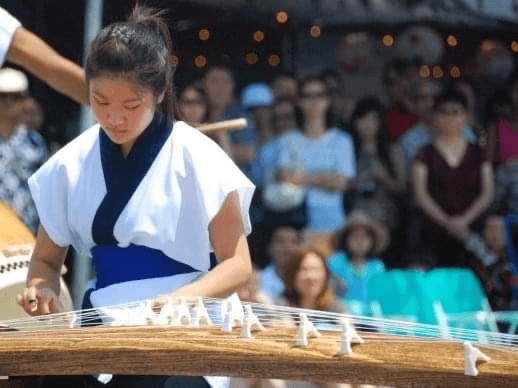
Can you open up a bit about your work and career? We’re big fans and we’d love for our community to learn more about your work.
In 1993, my parents signed me up for private koto lessons with Madame Kazue Kudo for a year, and I continued thereafter with Toshiko Matsuzawa every week until I graduated from high school. To say, “Learning to play the koto is challenging,” is truly an understatement. I often felt like my playing was inadequate, as I struggled to develop the various intricate finger-picking techniques. Additionally, as a yonsei (fourth-generation) Japanese American living in sunny Southern California, I was pretty far removed from Japanese culture, so it was difficult for me to connect with the traditional music I was learning. Fortunately for me, Mrs. Matsuzawa compassionately encouraged and guided me, never giving up on me even when I regretfully showed up to my lessons with the utmost dread. It wasn’t until I was in middle school that I realized I could tune the koto to a western scale and play Disney, pop, and R&B songs. Suddenly a fire ignited within me and sparked my love for the instrument. I spent countless hours after school and on weekends playing “Beauty and the Beast”, “A Whole New World”, Maroon 5’s “Sunday Morning”, and K-Ci & JoJo’s “All My Life” on the koto, singing along at the top of my lungs. Up until then I had been learning classical Japanese music only, so playing pop songs on the koto really motivated me to practice, and the techniques I had been struggling with eventually got easier. Around this time, I also joined several Japanese taiko drum ensembles and tried my hand at arranging taiko pieces with koto melodies. This experimentation with koto and taiko continued beyond my college years, leading to my first koto composition, “Seiza” (Constellations), with taiko artist Masato “Maz” Baba.
What took my koto playing to the next level, though, was studying under Shirley Kazuyo Muramoto by recommendation from June Kuramoto. I had the privilege of taking a few lessons from “Auntie June” and even performing with her in my younger years, so when she heard I was moving up to the Bay Area, she urged me to contact Shirley to continue learning koto. Soon after an hour-long phone conversation with Shirley during the height of the Covid-19 pandemic, I was meeting with her weekly over Zoom to somehow navigate virtual koto lessons – a foreign concept to us both at the time. Shirley quickly discovered that I like to sing, so she made a koto and vocal arrangement of The Carpenters’ “Merry Christmas, Darling” for me to record for our virtual holiday programming. She also introduced me to challenging koto classics composed in the 1800s, which incorporate traditional Japanese singing. Shortly after, we were accepted into the Alliance for California Traditional Arts’ Apprenticeship Program. Over the course of a year, I worked intensively with Shirley to master both traditional and modern koto repertoire to attain my Shihan teaching degree with honors from the Chikushikai Koto and Shamisen School in Fukuoka, Japan. Inspired by the influences of my former teachers who paved the way in America to bring koto music to broader audiences, I strive to use my background to present the koto in a way that reflects my unique yonsei identity. While I actively seek opportunities to learn more about Japanese music and culture, I also push myself to create koto music that appeals to the next generation.
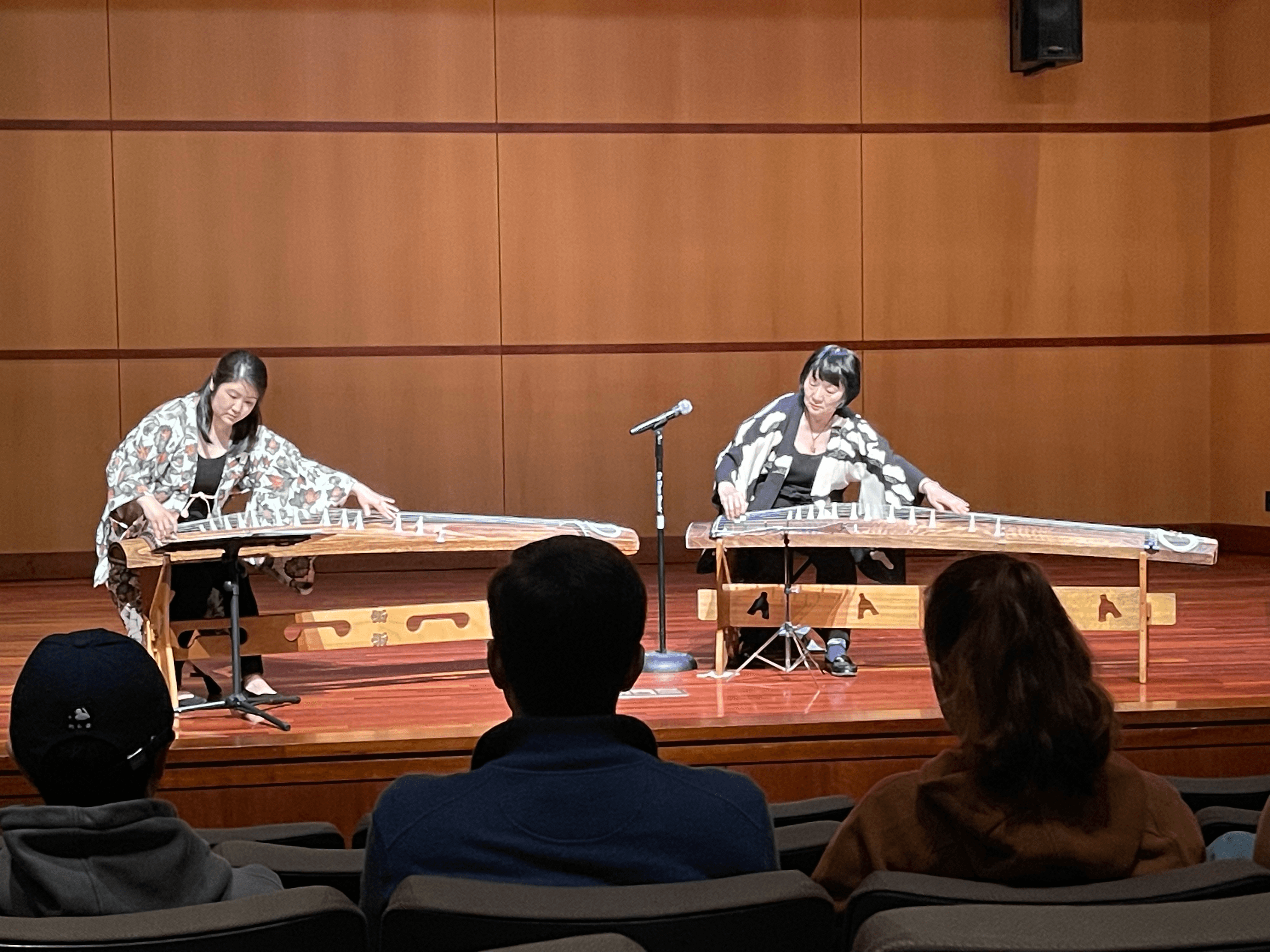
Let’s say your best friend was visiting the area and you wanted to show them the best time ever. Where would you take them? Give us a little itinerary – say it was a week long trip, where would you eat, drink, visit, hang out, etc.
One of my favorite places to visit in the city is Little Tokyo because it offers a little bit of everything for a full day of fun! The first stop would be the restaurant Azay on 1st Street to score their authentic Japanese breakfast (one of the only few places in the area that offers this) and say hi to the lovely Hirose family. Then we’d walk down the street to Fugetsudo, a Japanese confectionary, to pick up sakura mochi (my fave for the spring season), glutinous rice balls filled with sweet red bean paste, wrapped in edible pickled cherry blossom leaves (yum!). We can keep heading down 1st Street to the Japanese American National Museum to peruse the featured exhibitions, then cross the street for souvenir shopping at Bunkado, making sure not to miss the delightful scents of Nostalgiana by Natsuki upstairs on the 2nd floor. From there, we’d make our way to 2nd Street to grab a super fresh nigiri sushi lunch at Hama Sushi. If it’s a Saturday, we’d head over to the Kokoro no Kōhī pop-up at Aloha Cafe where the friendly owner, Curtis, would greet us with a smile and make us thoughtfully crafted coffee and matcha drinks. Then we’d walk back down 2nd Street for apparel shopping at the iconic Japangeles streetwear store. For another snack, we’d wander through the Japanese Village Plaza to Mitsuru Cafe for a hot and fresh imagawayaki, a sweet red bean filled pancake. If we’re lucky, we may get to witness Little Tokyo’s treasured one-man band, Arthur Nakane performing a variety of tunes in front of Nijiya Market. Finding our way out of the plaza toward 2nd Street, we’d cross the street and walk around the Isamu Noguchi Plaza, eventually stopping just outside the Japanese American Cultural and Community Center where we can peer over the ledge to admire the beautiful James Irvine Japanese Garden from above. Finally, we’d head back to 2nd Street to have Japanese comfort food for dinner at Kouraku. My favorite dish is the Tenshin Chahan Ankake (fluffy shrimp omelette over pork fried rice and smothered in a savory gravy). If the night is still young, we can make our way back to 1st street to unwind over cocktails at Little Tokyo’s neighborhood bar, Far Bar!
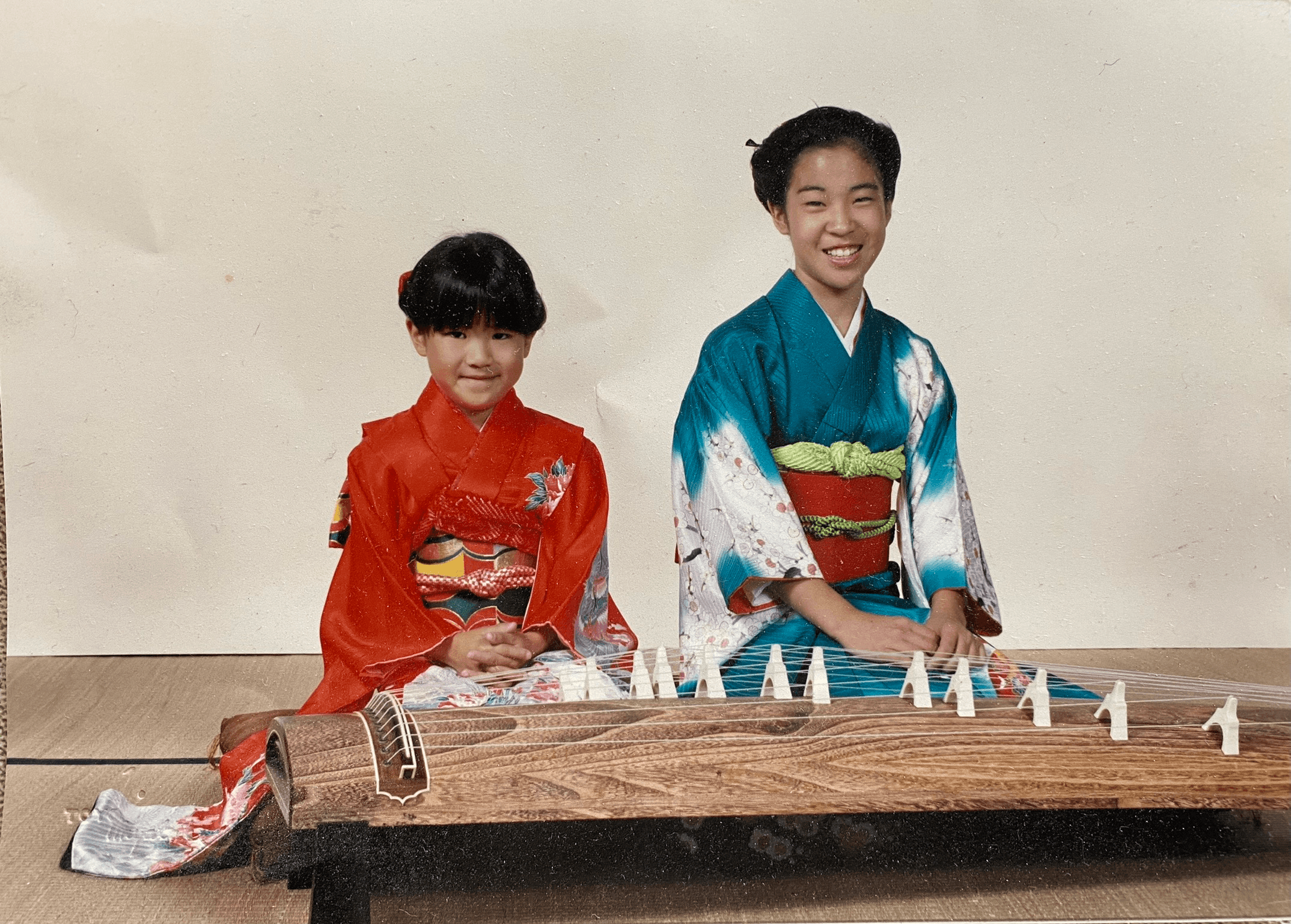
The Shoutout series is all about recognizing that our success and where we are in life is at least somewhat thanks to the efforts, support, mentorship, love and encouragement of others. So is there someone that you want to dedicate your shoutout to?
I want to dedicate this shoutout to my husband, Eric, who has been the biggest supporter of my music. He comes with me to nearly all my performances, sets up and breaks down my equipment, helps me dress in kimono, takes photos and videos for me to post on social media, and has even taken the time and effort to learn koto stringing so that he can replace the strings on my koto (and others’ kotos) as needed. Eric was the one who encouraged me to work towards achieving my koto teaching degree and gave me much-needed musical critiques before my exam to ensure that I would pass. I am so grateful to him for all that he does for me, and I would not be where I am today in my koto journey if not for his love and dedication.
Instagram: @emilyimazumi
Youtube: @emilyimazumi5966


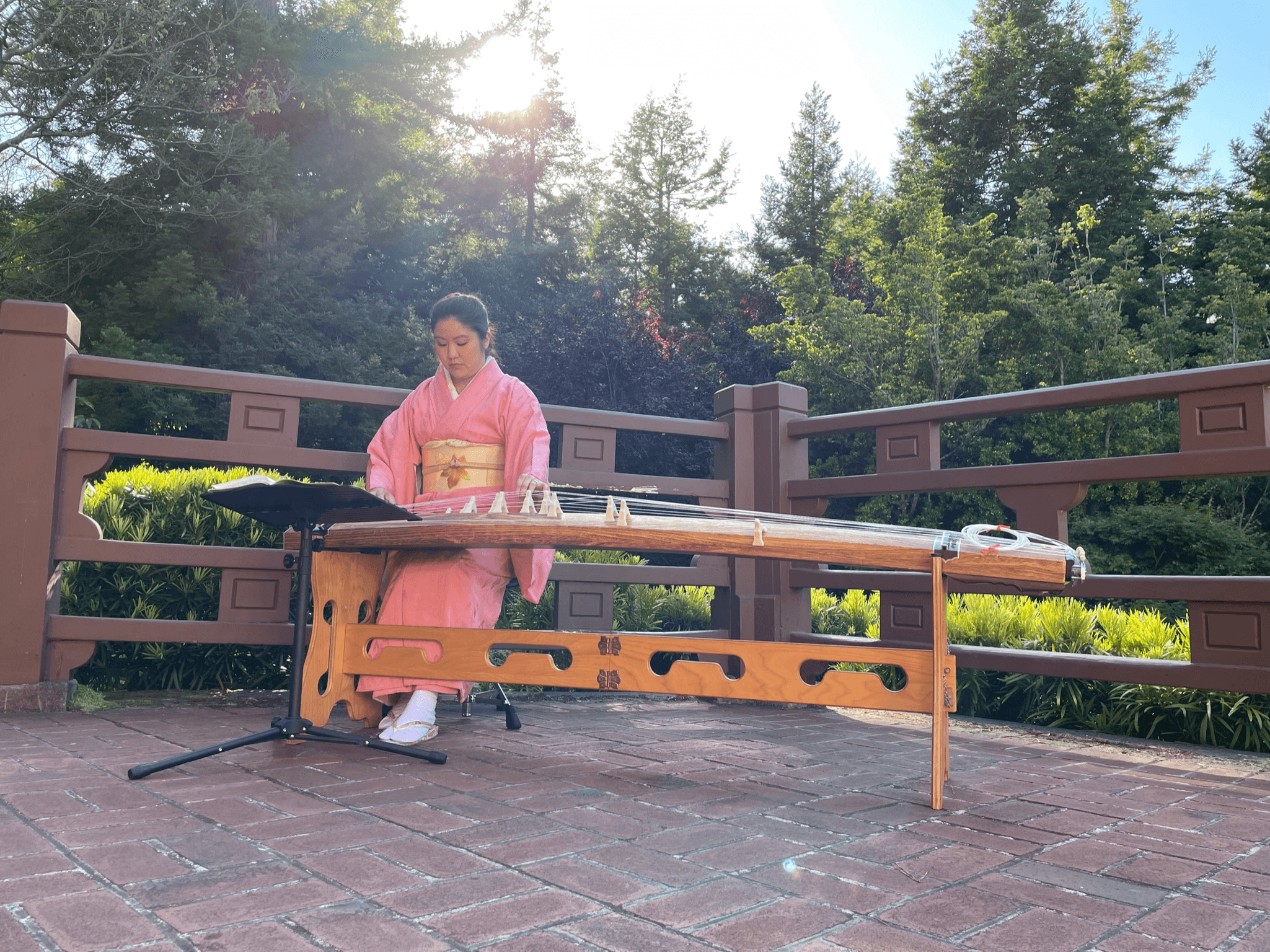

Image Credits
Khanh Ly, Eric Imazumi, Toyo Miyatake Studio, Robert C. Wong
